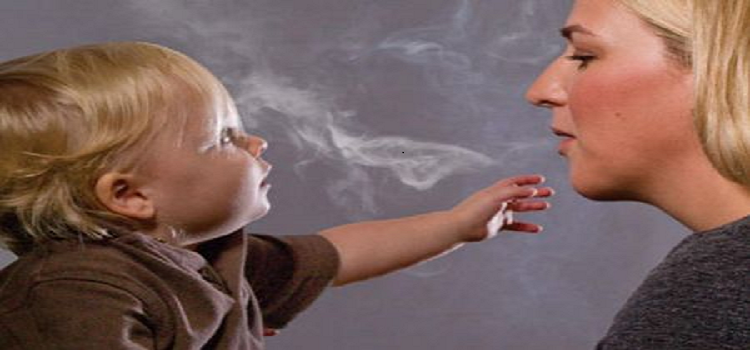
Image Source: Topyaps
Whether you smoke harmful chemicals by yourself or take in smoke left out by others, you are going to suffer adverse effects that come from tobacco and other toxins. The left out smoke is called second hand smoke or passive smoke.
According to studies, a person who smokes a cigarette inhales 20% of tobacco content in the cigarette and the rest escapes into the air. But if a non-smoker is exposed to left out smoke in a room for two hours, he or she would be inhaling smoke equivalent to 4 cigarettes.
The chemicals or carcinogens found in the passive smoke are benzopyrene, benzene, ammonia, formaldehyde and hydrogen cyanide. A research conducted on passive smoking shows that it contains twice the amount of tar and nicotine left out by the smoker. Also the amount of carbon in the smoke is five times more than that of the smoke inhaled by the smoker. So this means that passive smokers are at greater risk than smokers if they are exposed for long.
Another type of smoke emitted by cigarette is called as Side stream smoke. This smoke is produced at a cooler temperature from the top sides of the cigarette and contain higher amount of chemicals as it doesn't combust properly.
When a person smokes inside a room, the smoke rises up as it is lighter than the air. But the tobacco cools rapidly and stops ascending and creates a cloud. If there are non smokers in the room they can do nothing but breathe this and possibly damage the body.
Below are the long term effects if you are a passive smoker:
- The risk of cancer increases by 20 to 30 percent. According to researchers and doctors, environmental tobacco is graded as Class A carcinogen causing cancer in the cervix, bladder, breasts and throat.
- There is conclusive evidence that passive smoking increases the risk of having a coronary heart disease
- Passive smoking for prolonged periods increases the risk of chronic respiratory disorders.
- Narrowing of carotid arteries that are responsible for transmitting blood to the brain
- Risk of suffering blood clots as tobacco makes the blood denser.
- The amount of HDL cholesterol is reduced in the blood.
- Hardening or narrowing of the arteries can start after 30 minutes of tobacco exposure.
- Suffer a stroke.
- Developing a sinus and nose cancer.
- The risk of cardiovascular disease is increased while blood vessels are damaged and there is rise in cholesterol levels.
Click Here to browse through more health care products available at the JBN Store.





